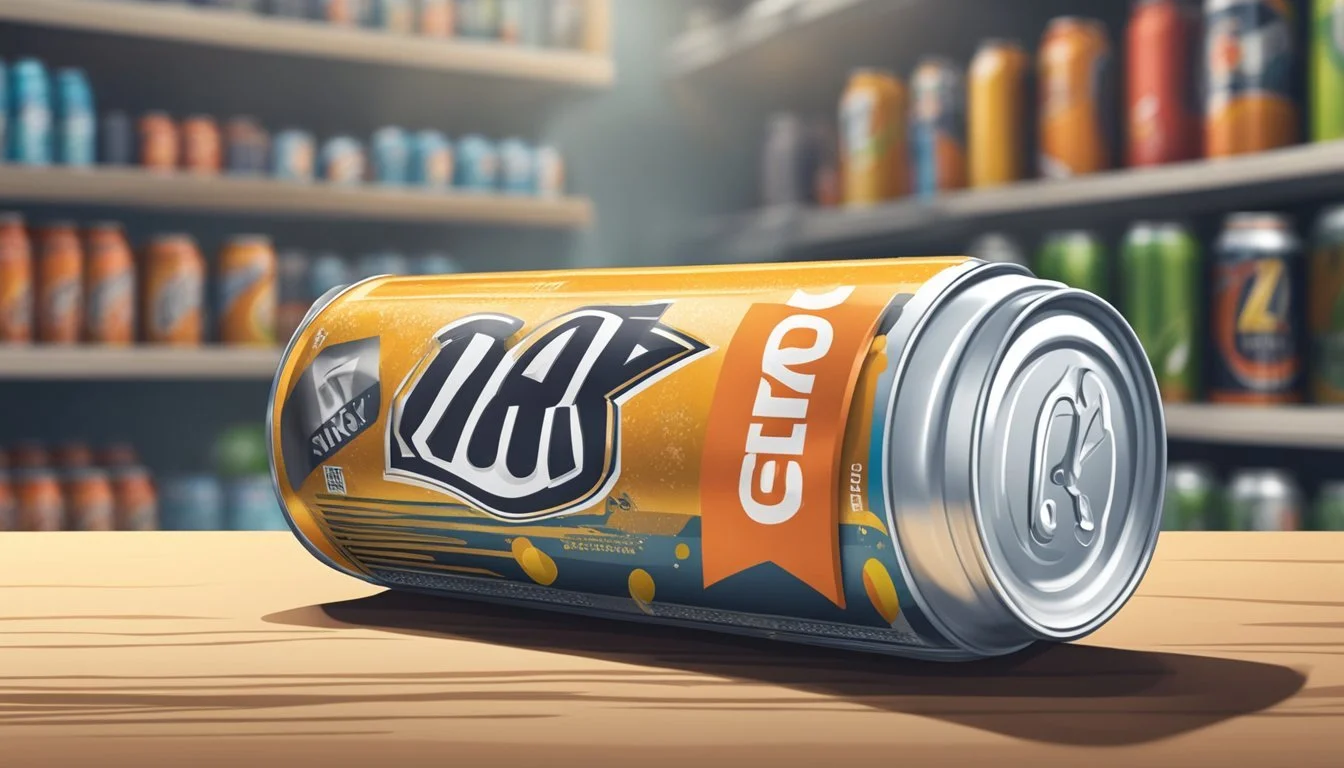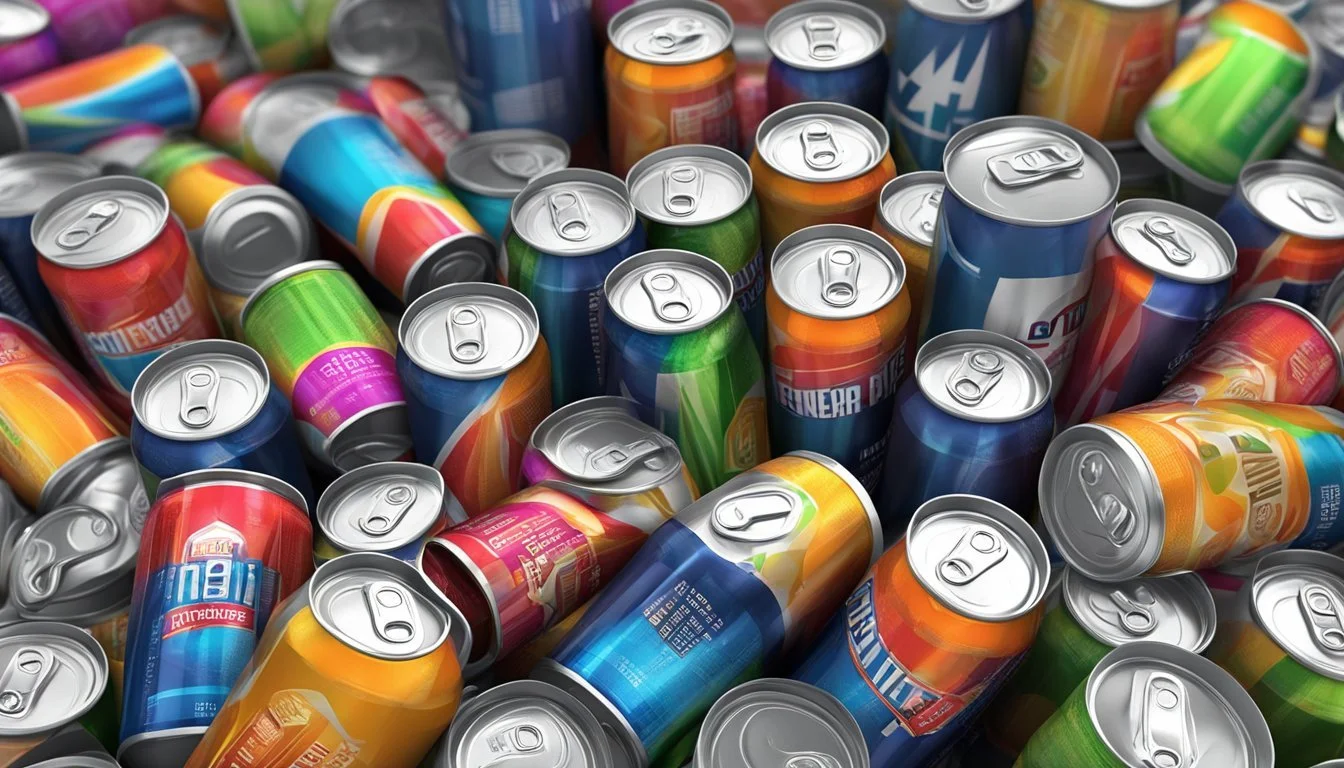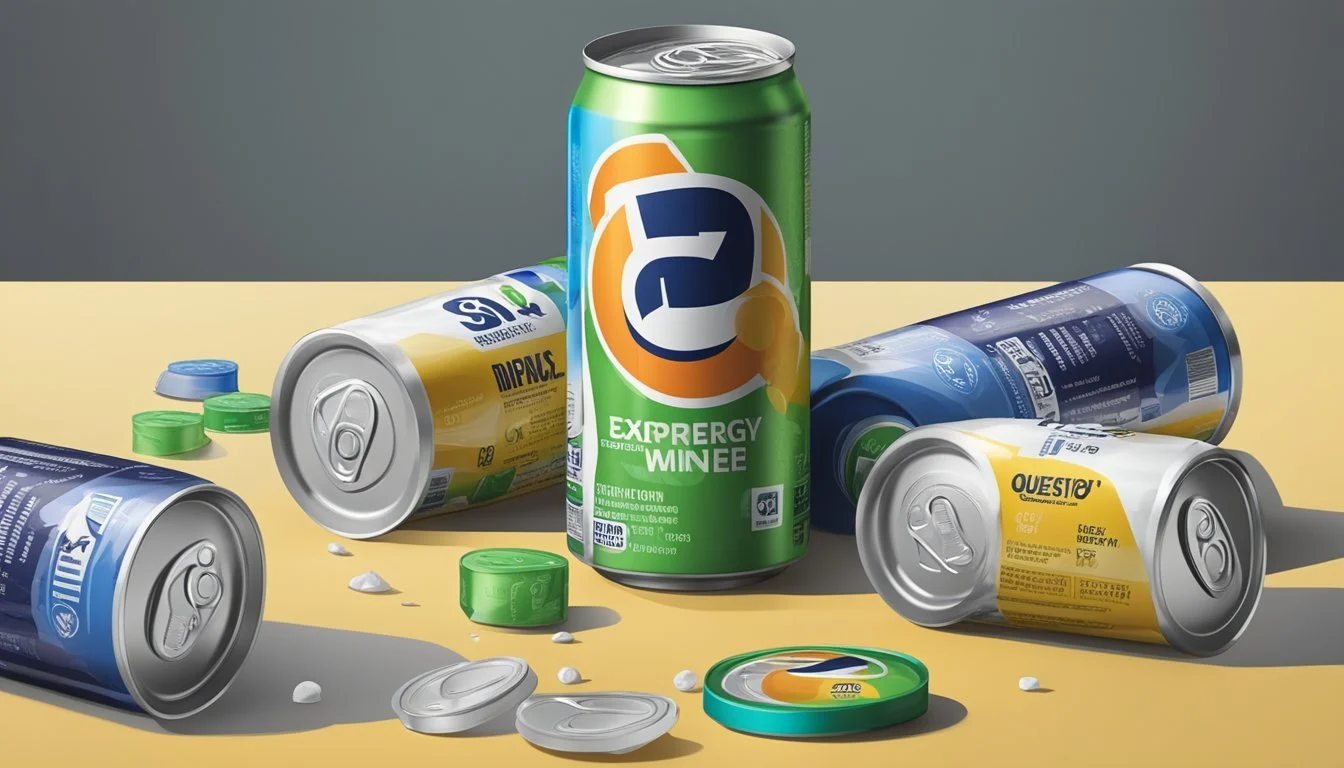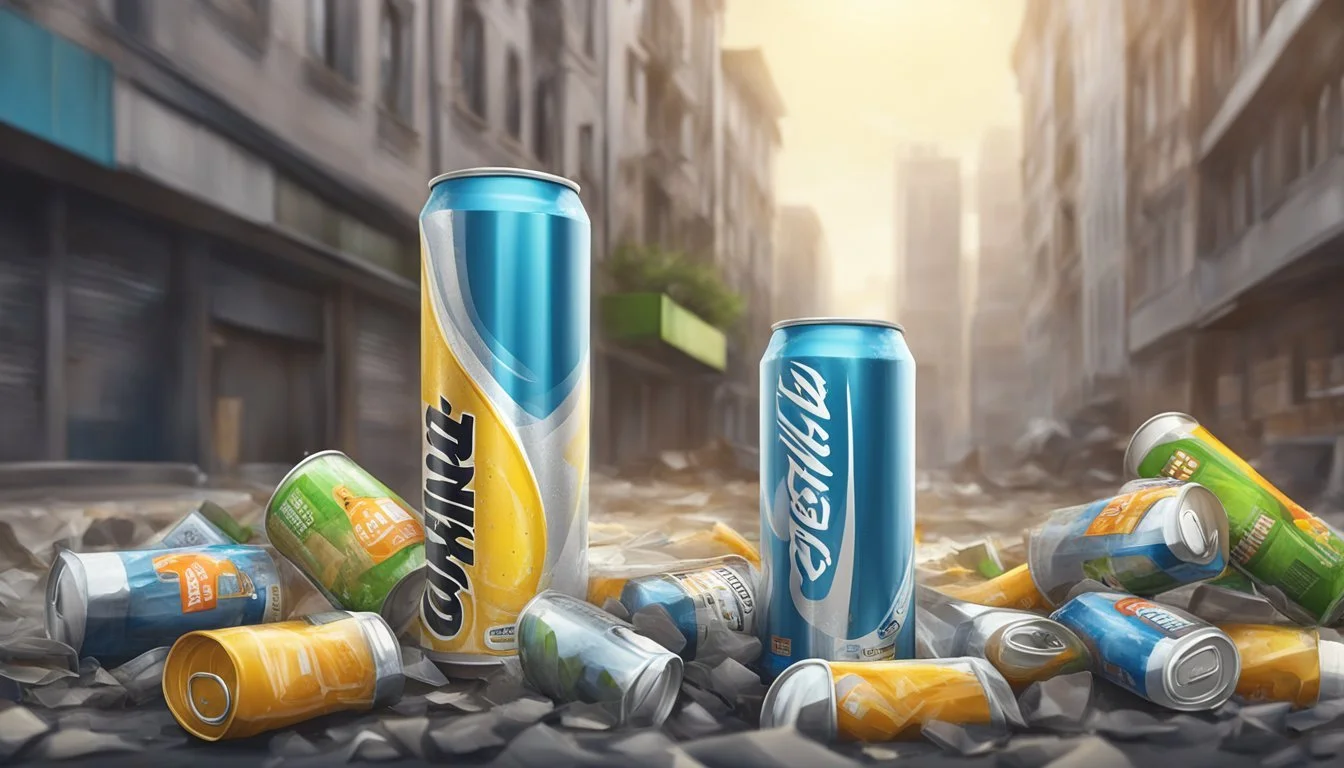Do Energy Drinks Expire?
Shelf Life and Storage Tips
Energy drinks, known for their quick boost of energy and alertness, do have an expiration date. It's crucial to consume these beverages within the suggested period by the manufacturers to ensure the best taste and effectiveness. Typically, the shelf life of unopened energy drinks ranges from 6 to 9 months, and this can vary depending on the brand and storage conditions.
Health-conscious consumers should pay attention to these expiration dates, as consuming expired energy drinks can lead to reduced potency of ingredients and possibly adverse effects, especially for those with sensitive stomachs. Obvious signs like changes in taste, smell, or appearance can indicate that the drink is no longer safe for consumption. Additionally, any visible damage or corrosion on the can is a red flag that it should be discarded immediately.
Proper storage also plays a significant role in maintaining the quality of energy drinks. Keeping them at room temperature and away from direct sunlight can help prolong their shelf life, ensuring they remain effective and safe to drink for as long as possible.
Understanding Energy Drinks
Energy drinks are popular for their ability to boost energy and alertness. They contain various components that contribute to their stimulating effects and are available in numerous brands and varieties.
Key Components and Nutritional Value
Ingredients: Energy drinks typically consist of caffeine, taurine, sugar, preservatives, and vitamins. Each ingredient plays a role in enhancing energy levels and mental alertness.
Caffeine: This is a primary stimulant that enhances psychological and physiological functions. Commonly present in varying amounts, caffeine content ranges from 70 mg to over 200 mg per serving.
Taurine: An amino acid that supports energy metabolism and neurological development. Often coupled with caffeine, it helps improve athletic performance.
Sugar and Preservatives: Most energy drinks contain high sugar levels for a quick energy boost. Some brands offer sugar-free options. Preservatives prolong shelf life and maintain freshness.
Nutrients and Stimulants: Energy drinks are fortified with vitamins like B6 and B12, essential for energy production. Guarana, another stimulant, is derived from a plant and enhances the drink's energizing effect.
Popular Brands and Varieties
Monster: Known for its high caffeine content and diverse flavors, Monster also includes additional ingredients like ginseng.
Red Bull: One of the original energy drinks, Red Bull contains around 80 mg of caffeine per can and is praised for its effectiveness and taste.
Rockstar: Rockstar offers a wide range of flavors and options, including sugar-free and organic variants. Its caffeine content is similar to that of Monster.
NOS: Known for its unique packaging and potent formula, NOS provides a high-energy kick. Often preferred by those who need an intense energy boost.
Each brand caters to specific preferences with options like low-calorie, organic, and specialty drinks to meet varying consumer needs.
Shelf Life and Expiration
Energy drinks have a limited shelf life, impacted by various factors including manufacturing date and storage conditions. Knowing how long energy drinks last and identifying their expiration date is critical for safe consumption.
Determining the Expiry Date
The expiry date of energy drinks can be found on the packaging. Typically, manufacturers print the expiration date on the bottom of the can or near the nutrition label.
Unopened energy drinks generally last 6 to 12 months beyond their "best by" date if stored properly. It's crucial to check for any swelling on the can or unusual odors upon opening as these can indicate spoilage.
Expired energy drinks may lose their flavor and efficacy due to ingredient degradation. While preservatives help extend shelf life, they cannot prevent long-term spoilage.
Factors Influencing Shelf Life
Several factors can affect the shelf life of energy drinks:
Storage Conditions: Energy drinks should be stored at room temperature and away from direct sunlight. Exposure to extreme temperatures can shorten their shelf life.
Preservatives and Ingredients: The presence of high sugar content, acidity, and preservatives helps in prolonging the shelf life. However, these can only extend it to a certain point.
Packaging Integrity: Any damage to the can could expose the drink to contaminants, reducing its shelf life.
Manufacturers recommend following the printed expiration date to ensure quality and safety. Proper storage and handling enable the consumer to maximize the drink's shelf life effectively.
Effects of Expired Energy Drinks
Consuming expired energy drinks can lead to noticeable changes in quality and possible health risks. These effects vary based on the extent of expiration and individual tolerance.
Quality and Potency Deterioration
After the expiration date, the quality and potency of energy drinks decline. Ingredients such as caffeine, taurine, and vitamins may lose their effectiveness. The taste often becomes off, accompanied by an unusual smell.
The carbonation in energy drinks might dissipate, causing them to taste flat. Additionally, expired drinks often have a different color or consistency, which can indicate changes in ingredient composition.
Potential Health Implications
Drinking expired energy drinks may lead to several adverse health effects. Individuals might experience digestive issues like stomach aches, nausea, and upset stomach due to deteriorated ingredients or bacterial growth.
Some people could develop mild to severe food poisoning symptoms. The potency of caffeine can also diminish, leading to unpredictable effects on caffeine tolerance. It is crucial for people with sensitive digestive systems or underlying medical conditions to avoid expired drinks. Despite some instances where it might be safe, consuming expired energy drinks poses significant risks.
Proper Storage Practices
Storing energy drinks correctly ensures their taste, quality, and safety. Key factors include keeping the beverages away from direct sunlight and maintaining a consistent temperature.
Unopened vs. Opened Energy Drinks
Unopened energy drinks should be stored at room temperature in a cool, dry place. Avoid direct sunlight, which can degrade the drink's quality. Properly stored, unopened cans typically remain safe for consumption for 6 to 9 months beyond the production date.
Opened energy drinks require refrigeration to maintain freshness. An opened can should be consumed within 48 hours to prevent loss of carbonation and flavor. Warm environments can quickly deteriorate the drink's quality. Keep the opened container sealed to minimize exposure to air, which can cause the drink to go flat and taste off.
Recommendations for Extending Shelf Life
To extend the shelf life of both unopened and opened energy drinks, follow these steps:
Keep them cool: Store at or below room temperature. For opened cans, always refrigerate.
Avoid sunlight: Exposure to bright light can break down ingredients, leading to taste and quality degradation.
Check the seal: Ensure unopened cans remain intact and opened cans are tightly sealed.
Use airtight containers: For extended storage, consider transferring opened energy drinks to airtight containers to maintain carbonation and freshness.
By following these practices, you can enjoy your energy drinks at their best quality and taste. Proper storage not only maximizes shelf life but also ensures a safer and more pleasant drinking experience.
Considerations Before Consumption
When considering the consumption of an energy drink near or past its expiration date, it's essential to examine both visual and sensory cues. These indicators can help determine the quality and potential safety of the drink.
Visual and Sensory Cues
Energy drinks may exhibit visual signs of spoilage when expired. Common visual indicators include changes in color, the presence of floating particles, or any unusual cloudiness. If the can shows signs of hydrogen swelling, such as bulging, it should be avoided due to potential contamination.
Sensory evaluation is also crucial. Any off or sour smell could suggest the drink has degraded. Tasting should be approached with caution; if the flavor is off, it might signify spoilage. Always check the can for minor leaks or rusting before consuming, as these can also impact the drink's safety.
Impact of Packaging and Environment
The shelf life of energy drinks can be influenced by the materials used for packaging and the conditions in which they are stored. Key factors include the type of packaging material and the environmental conditions such as exposure to sunlight and temperature variations.
Packaging Materials and Protection
The choice of packaging materials is vital for preserving energy drinks. Aluminum cans and PET bottles are commonly used. Aluminum cans provide an excellent barrier against light and oxygen, reducing the risk of carbonation loss and chemical changes. PET bottles are lightweight but less effective in blocking light. Glass bottles, though less common, offer superior protection but are heavier and more prone to breakage.
Exposure to sunlight and extreme temperatures can degrade the quality of energy drinks. High temperatures can accelerate chemical reactions, leading to loss of flavor and potency. Storing in a cool, dark place is essential for maintaining the quality of beverages like energy drinks and tea. Avoiding direct sunlight helps in preventing degradation and prolonging shelf life.






